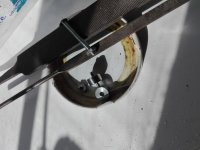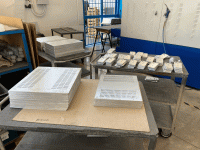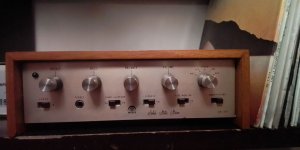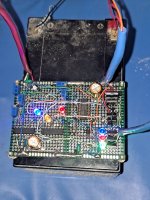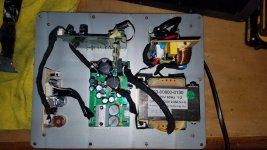Hi Everyone,
I bought a pair of B&W DM2ii speakers, which look great to my eyes. Really nice condition in Teak & generally they sound pretty good, but the sound is a bit hollow on some music, and the treble could do with being a bit brighter, although the actual situation isn't too bad TBH. All drivers are working well, but I feel a recap or refresh of the crossovers is required after 43 years.
These speakers have 9 caps on each crossover, so 6 pye electrolytics for the LF & MF, and 3 film (metallised?) caps for the HF. As mentioned it would be good if a little bit more sparkle was restored to the tweeters.
I have been looking at various on-line shops in Europe & UK, and I must admit it's pretty confusing between the different makes & types, with some big price differences for polyproplyene caps depending on the make & model. Basically this is a pocket money hobby for me, and I don't want to spend too much on restoring them, so I am looking for the best sweet spot between cost & quality. This is my plan :
LF & MF :
Use good quality electrolytics. My considered options are ALCAP low loss, ALCAP 100V, or Mundorf E caps
The advantage of the ALCAP range is that they have the exact same capacitance capacitors as the original caps (ex 80uf, 30uf, 20uf etc) whereas all other makes including MKT types, tend to have a nearby equivalent but not the same capacitance (ex 82uf, 33uf, 22uf)
Can anyone advise what would be best, or any alternative ideas ?
HF :
The orignal capacitors are 3 square rectangular film type caps (5uf in series, 2.2uf & 0.47uf in parallel), in close proximity to other components, and maybe it would be a squeeze to use some large Polyproplyene caps.
My options here are Mundorf Mcap, Jantzen standard Z cap, SCR MKP or Solen MKP, or even WIMA MKP type film caps which would fit the board.
Again, can anyone advise what would be the best compromise ? I want to brighten up the tweeter a bit, but dont want to go overboard or regret it afterwards. I guess trying to be as close as possible to original sound is the target.
Many thanks

















